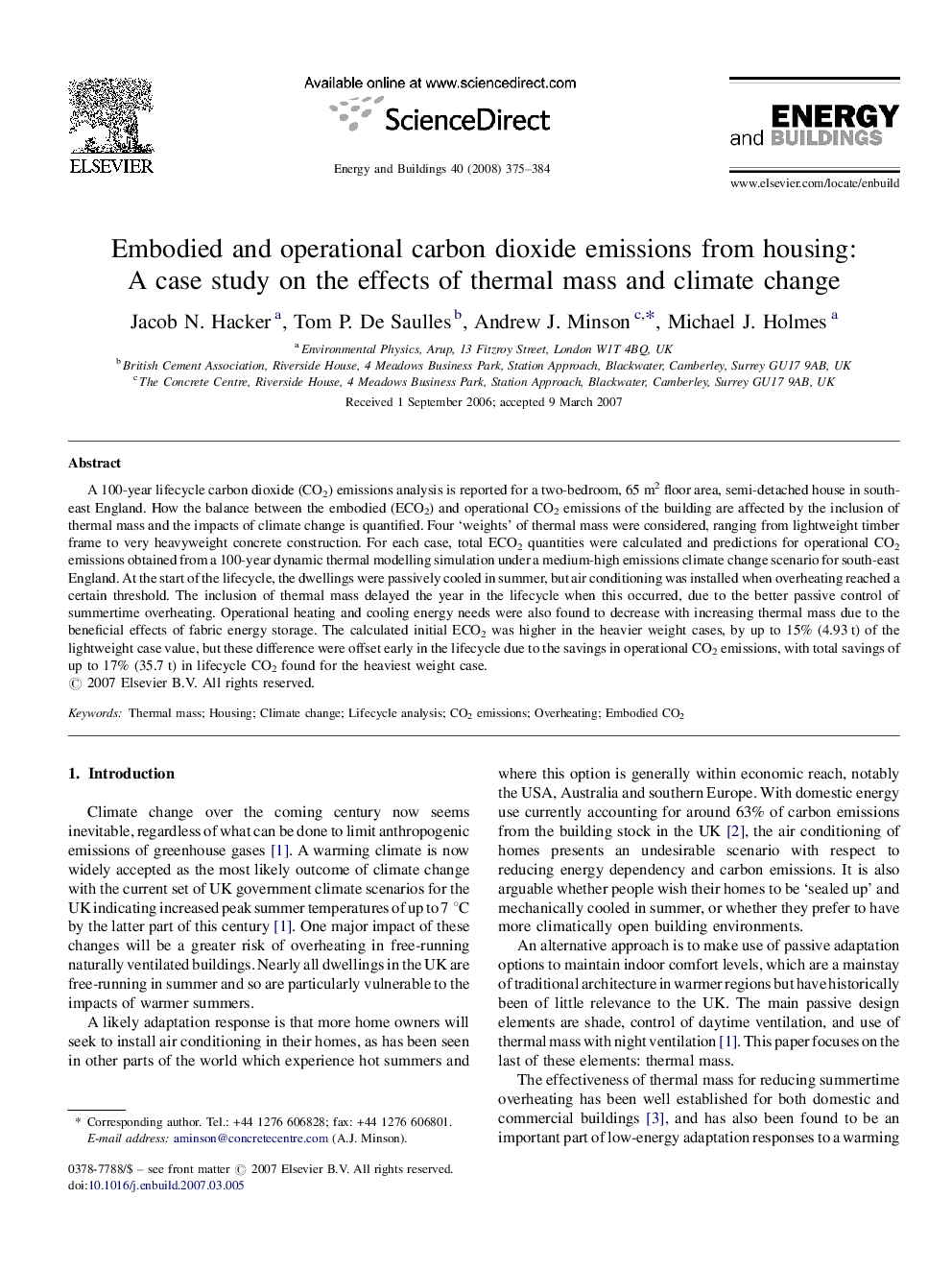| Article ID | Journal | Published Year | Pages | File Type |
|---|---|---|---|---|
| 265153 | Energy and Buildings | 2008 | 10 Pages |
A 100-year lifecycle carbon dioxide (CO2) emissions analysis is reported for a two-bedroom, 65 m2 floor area, semi-detached house in south-east England. How the balance between the embodied (ECO2) and operational CO2 emissions of the building are affected by the inclusion of thermal mass and the impacts of climate change is quantified. Four ‘weights’ of thermal mass were considered, ranging from lightweight timber frame to very heavyweight concrete construction. For each case, total ECO2 quantities were calculated and predictions for operational CO2 emissions obtained from a 100-year dynamic thermal modelling simulation under a medium-high emissions climate change scenario for south-east England. At the start of the lifecycle, the dwellings were passively cooled in summer, but air conditioning was installed when overheating reached a certain threshold. The inclusion of thermal mass delayed the year in the lifecycle when this occurred, due to the better passive control of summertime overheating. Operational heating and cooling energy needs were also found to decrease with increasing thermal mass due to the beneficial effects of fabric energy storage. The calculated initial ECO2 was higher in the heavier weight cases, by up to 15% (4.93 t) of the lightweight case value, but these difference were offset early in the lifecycle due to the savings in operational CO2 emissions, with total savings of up to 17% (35.7 t) in lifecycle CO2 found for the heaviest weight case.
